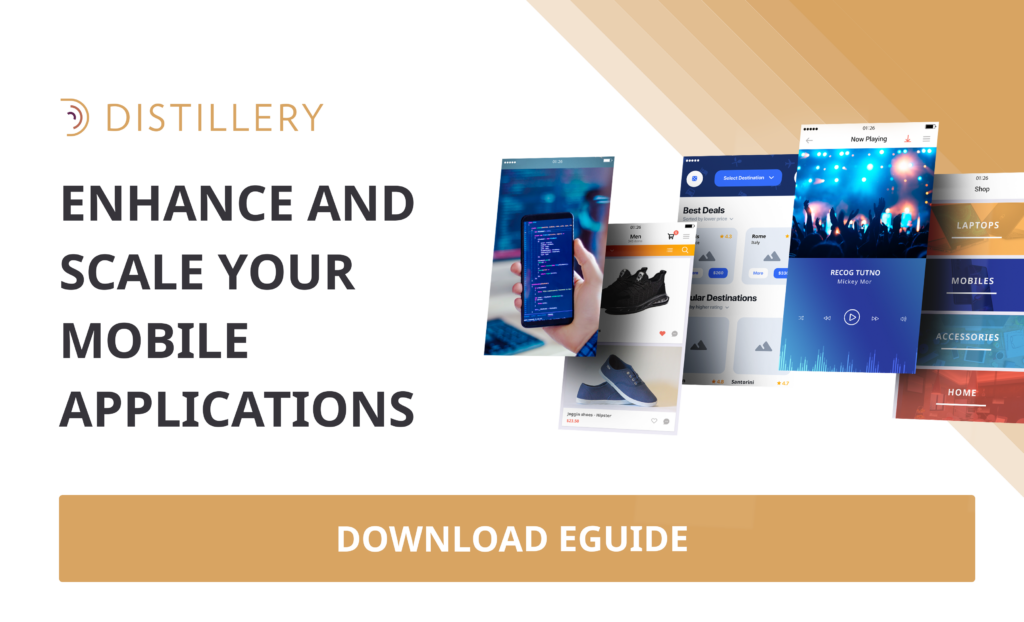Apps are everywhere. For every app you use or know about, however, there are thousands of apps that never got off the ground (and hundreds of apps that are still trying to find their audience).
While countless factors play into whether an app succeeds or fails, a well-thought-out plan is a vitally important foundation for any app. Thorough planning can help de-risk the development process and lay the groundwork for an application that can generate real ROI.
| Further Reading: Planning to nearshore your operations? Discover why Nearshore Staff Augmentation can be a powerful strategy to access a vast talent pool. Weigh in the pros and cons of Nearshore Outsourcing and discover six best practices to make the most out of it. |
As a software design and development company with deep experience in web development and mobile app development, Distillery has learned a thing or two about app development over the years.
With that in mind, we put together a breakdown of some of the most important factors to consider when planning for the development of a new application. We provide more detail on each below.
Planning for an Impactful Application: 5 Essential Steps
- Decide on a goal.
- Decide on a platform.
- Estimate costs.
- Research the market.
- Decide how you want to make money.
Step One: Decide on a Goal
Why are you building your app? What do you want to accomplish? These are crucial questions to answer, even if they seem simple.
An app shouldn’t try to do everything at once, and prioritizing goals is essential. An app intended for long term development as a consumer-facing product will have very different goals than an app designed to function as a POC to attract potential investors.
Step Two: Decide on a Platform
Selecting the right platform is essential for maximizing your application’s potential. Picking a platform isn’t about deciding which one is “best,” just best for your goals.
For native mobile applications, for instance, there are key pros and cons to both iOS and Android.
iOS Development
Quality control is central to Apple’s approach, and they maintain much stricter control of iOS apps compared to Android. The cost of joining Apple’s developer membership programs ranges from $99 to $299 annually, depending on whether you’re creating apps for public distribution or internal use. Membership provides SDK tools and allows developers to push their completed apps to the App Store.
Security is tighter, encryption is stronger, and there is much less OS fragmentation on iOS. A team of developers reviews every app to check for errors and explicit content.
Android Development
Android is a more open platform with a free SDK and fewer restrictions on things like in-app purchases.
Android comprises over 85% of the global market, making the potential reach for apps much larger.
The approval process on Google Play only takes a few hours, and the registration fee is a modest $25. However, more freedom means some compromises with security.
Step Three: Estimate App Development Costs
Depending on which features you want to include, the development time for your app could range from 2-4 weeks to several months, costing anywhere from $10,000 to more than $100,000.
Good cost estimation is about more than budgeting: ensuring you have the right resources in place will help ensure that you build an application capable of fulfilling its core goals.
Step Four: Research the Market for Your App
A well-built app won’t deliver value if it isn’t capable of succeeding in the marketplace (even if that marketplace is internal company users). The details can vary substantially from B2B, to B2C, to internal apps, but understanding your target market is a vital part of the planning process.
Idea Validation
Your app may or may not have existing competition. Apps already successfully working in your target market come with a silver lining: you don’t need to worry about validating your idea’s feasibility.
For example, if you’re building a music player, players like Google, Spotify, and Pandora will provide plenty of validation–but it may be an uphill battle to get your application noticed.
Unless you can innovate in your chosen space, do not spend the considerable time and effort required to reinvent the wheel.
Target Market
Know your customer. How old are they? Are they male or female? What are their habits, especially when it comes to their cell phones (eg. do they check once, five, or ten times a day?). Are they tech-savvy enough to navigate a more complex user interface, or does it need to be as simple as possible?
If your app is geared towards older adults, simpler is better. Considerations like these are crucial for success.
Step Five: Decide How to Monetize Your Application
Know how you are going to monetize your app before you launch it. The freemium model is one option, giving people a taste and charging only for the full version of the application. Other options include ads or in-app purchases.
No matter which model you choose, it needs to be well suited to the overall strategy of the application you’re developing.
Next Steps
Want to learn more about the process of building an app? Or are you still trying to determine whether your business needs an app, period? Let us know! We’re happy to talk with you about your unique situation to help you determine the right way forward.


